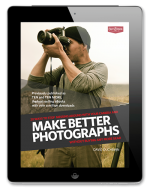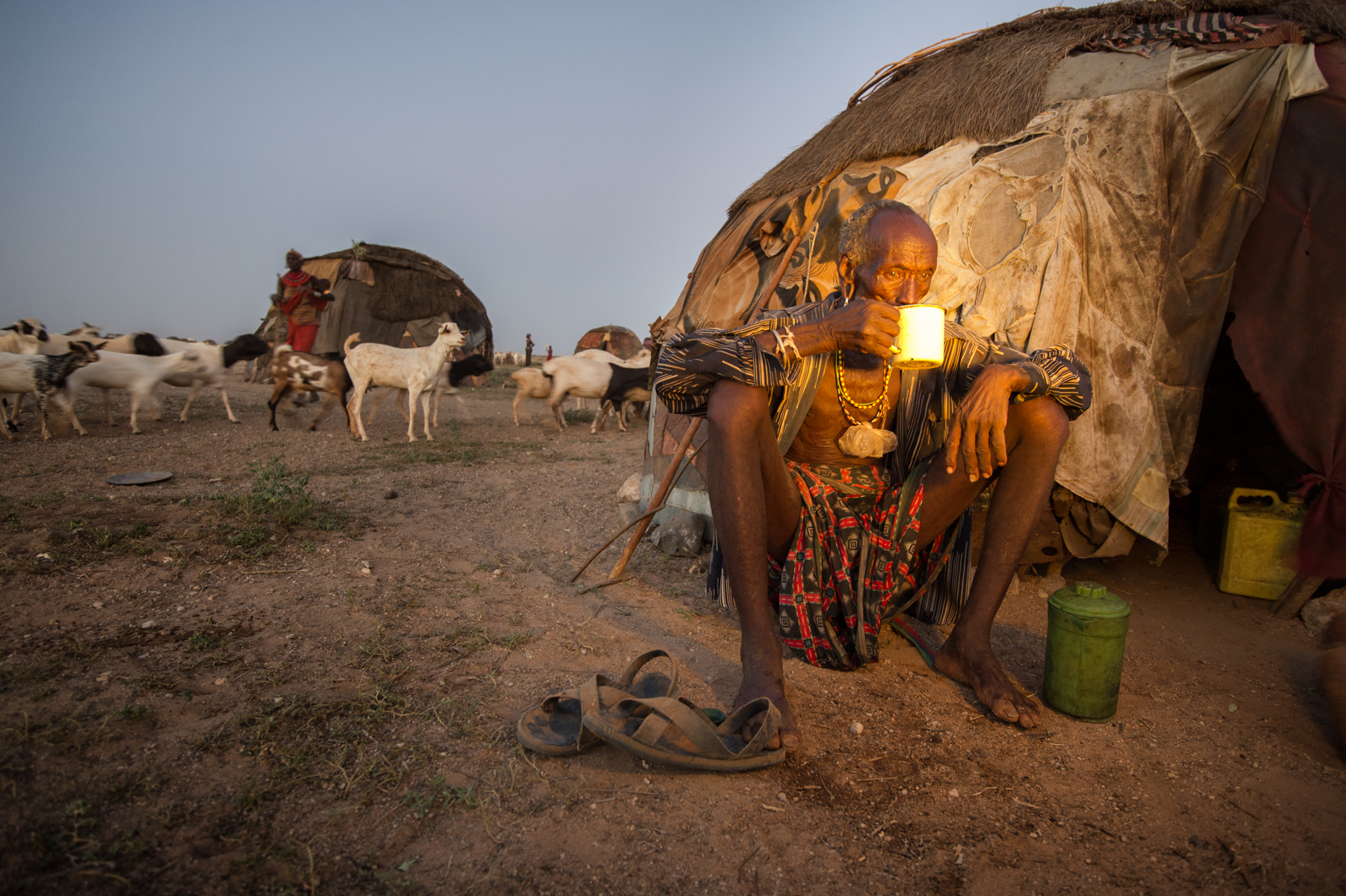In the now classic comedy, City Slickers, veteran cowboy Curly says to Mitch (played by Billy Crystal), “Do you know what the secret of life is?” Mitch says, “No, what?” And Curly holds up his finger.
“This.”
“Your finger?” asks Mitch.
“One thing. Just one thing. You stick to that and everything else don’t mean sh*t.”
“That’s great but what’s the one thing?”
“That’s what you’ve gotta figure out.”
My earliest and best lesson in photography wasn’t much different. I can’t tell you what that one thing is; photograph by photograph, it’s an exploration that only you can make. But I can tell you this: the best photographs are about one thing. The job of the photographer is to make a choice about that one thing and how to give it its best expression.
Where so many of us struggle in our early days and years with a camera is making choices about that one thing. We want to cram it all in there, not excluding anything. But photography by its very nature is an art of exclusion; the frame shuts out anything we don’t put within it. The shutter, both when it is opened and for how long, does the same: choosing one moment to the exclusion of others. Focus is also a tool for inclusion or exclusion depending on where we focus and how deeply. And there’s more. Long lenses exclude by virtue of their tight angle of view. Wide angles can so exaggerate closer objects and so diminish background objects that the effect can be one of near exclusion.
Every tool we have in our hands is capable of excluding anything but that one thing. Whether we do or not depends on the choices we make before we press the shutter. But before we make decisions about what we do with those tools of exclusion, we have to be conscious of that one thing. We have to decide what’s in and what’s out—what helps the photograph and what dilutes it.
To do otherwise, or to leave it to chance and abdicate your responsibility to take out the unnecessary, is to create photographs with no priorities, no sense of what the subject is. Images that confuse. Pictures in which the potential message is jumbled and the potential impact is so diluted that they’re soon forgotten.
This was the missing piece for me for a long time. I had all these tools: depth of field and faster shutters and angle of view and different perspectives. I knew what the tools did, but no one taught me what they could be used for. It took me a long time to figure out that they are merely ways to show my own thing and to do so much more powerfully than I had been.
The question I started asking myself was this: how much can I exclude from this scene before it’s too much? And I could only answer that by trying, making a lot of sketch images, getting closer, moving, trying different lenses and apertures and shutter speeds, until I got to the point where I had removed a little too much. And then I’d put that thing back.
To do that, I needed to know what that one thing was. Was it a duck? Was it the colours of the duck? Was it the duck on the pond in morning fog? Was it the duck landing on that pond? These are just four possibilities but if you know it’s specifically one of those and not another, your choices will be different in how you make the photograph, which frame you choose in the edit, and how you treat the image in the digital darkroom. You will make different choices about how much you include and what you exclude. You’ll make different choices about the light and the timing of the moment. Those choices depend on you—or moving toward discovering—that one thing.
If there’s one question I ask most frequently of the photographers I mentor, it’s this: what one thing are you trying to show me or express? When they can articulate that, the follow-up question is this: what could you have done to make this clearer, to give that one thing a stronger expression? It’s not always exclusion that’s needed. Sometimes a little missing context is what makes the image weak. Sometimes the image doesn’t need more or less, but different; a stronger moment, for example. So this isn’t an argument to whittle every image down to almost nothing. Some of my favourite compositions are more complex than they are simple. But they remain about one thing and are stronger because of that.
My friend John Paul Caponigro wrote that focusing a lens is not the same thing as focusing our attention. We learn the former relatively quickly in this craft, but unless we learn to use that tool, and all the other devices of our craft, to do the latter, we’re likely to create images that feel aimless and do so much less than what they’re capable of.
Before you press the shutter, think of me giving you the finger. No, not that finger. The other one: the Curly finger. What’s the one thing this frame needs to show, and how can you give it its strongest expression? If you know, then start making choices that do that. And if you don’t, as is often the case for all of us, then pick up the camera and make sketch images until you narrow it down. We often have to use our cameras to explore a subject before we can use them to express it.
Want to make stronger photographs?
Show us one thing.
-David.

PS – Want more like this? I send these articles out every two weeks to photographers around the world who want to improve their craft and explore their creativity and I’d love to include you. Tell me where to send it and I’ll send you a copy of my best-selling eBook Make Better Photographs, as well bi-weekly articles, first-glimpse monographs of my new work, and very occasional news of resources to help you keep moving forward in this craft we love.
“Each and every one of your emails inspire and motivate me to want to jump right out of my chair away from my computer and shoot for the love of it . Thank you David.” – Millie Brown


Comments
Really informative article. Often we wonder what is that one element differentiate a normal photographer and a professional wizard. Its just boil down to the passion with dedication. That alone is not complete the picture but the years of photographing. Cheers!
Thank you David, I really enjoyed reading your blog thank you so much
Excellent article! This article is informative and useful. Its helps me a lot. Thanks for sharing such a good article
Title of this post very amazing, Way to explain things such a very great. It is very helpful for new photographer like me to understand about photo and way to click it.
Thankyou David, you did a great job. I am impress. This article give is so helpful
Thanks For The Great image And Article.Good Advice and something worth remembering.
David, thank you. I came to your website fortuitously and i am very excited. I come back. Many thanks, Tony
Thanks for the article, I’m slowly learning to leave things out of the picture!
Good to see you’re visiting London over Christmas and even better that you’re giving a talk on the 29th at Wex Photo Video…gives me a great excuse to spend Saturday in London before attending your evening presentation! Looking forward to saying Hi…
Kelvin
Great advice and something worth remembering. I plan to give life the finger now that I am retired (well three more days, never hurts to practice). Photography will be an essential part of the fingering process.
Hopefully you find a lot of unexpected detours and diversions that completely wreck your careful planning
Jeff Curto likes to say photographers are, at the essence, editors of the world around us. Same thing said a different way. We choose what to include/exclude, when/when not to, where to stand/not stand, etc. So easily said, yet so difficult to know when we’ve got it right (if ever). And even when we think we have it right (i.e., we’ve mastered that “1” thing), we often screw things up (said with tongue in cheek) and change our vision and that brings up a different “1” thing… such is the life of an artist, right?
Have a great trip to Venice…. remarkable place.
The life of the artist indeed, my friend. WOuldn’t have it any other way. More and more I see that life as an exploration and there really are no wrong trails when you don’t know exactly where you’re going. There are detours, certainly, but often those turn out to be the more interesting paths.
Thanks for this.
Thankyou David, those are very useful words to me especially the part about expressing ONE thing! I have since reading your writings been removing parts from my images and hey its working to create clearer results…not always but there is now more intention, so thank you.
Right on, Jeremy. Thanks for saying so.